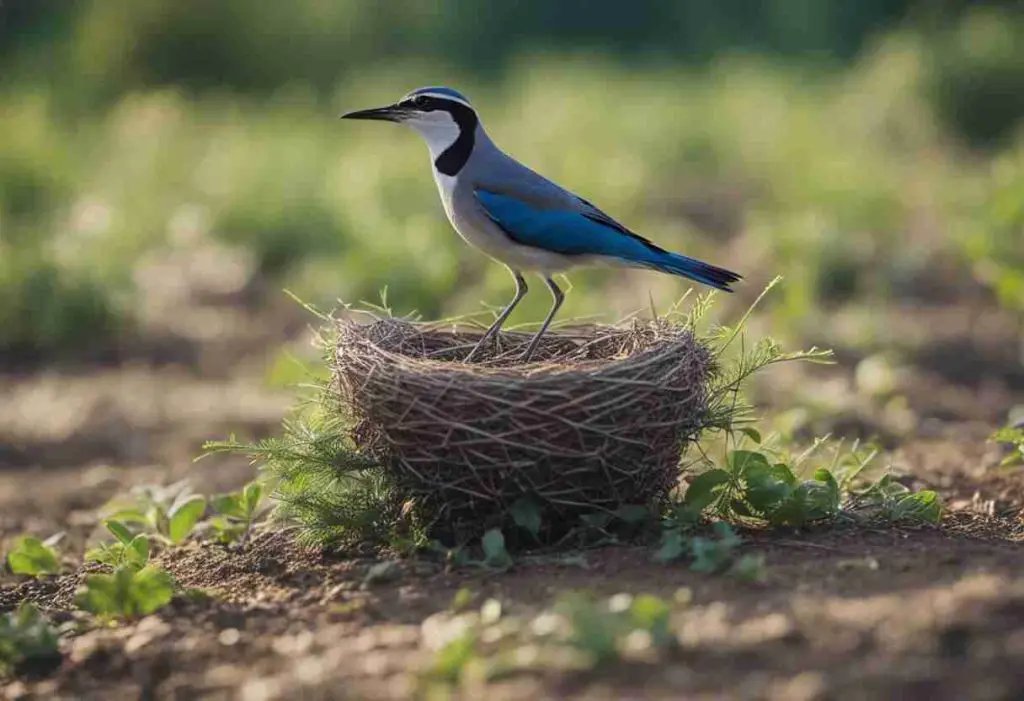Birds and mammals are two of the most diverse and fascinating groups of animals on the planet. While they share many similarities, they are also distinct in a number of ways.
One of the most common questions people ask is whether birds are mammals. The answer is no; birds are not mammals, but they do share some similarities with them.
Table of Contents
Key Takeaways:
- Understanding the distinction between birds and mammals is crucial in biology.
- Birds (class Aves) have feathers, beaks, and lay eggs; mammals (class Mammalia) have mammary glands, hair, and give birth to live young.
- Key differences include reproduction, respiratory systems, and skeletal structures.
- Dispelling misconceptions like birds being mammals aids accurate research and conservation.
- Correctly defining species supports precise ecological studies and enhances understanding of these animal groups.
Are Birds Mammals?
There is a common misconception among people regarding the classification of birds as mammals. To clarify, birds are not mammals; they belong to a separate biological class called Aves. The main characteristic that distinguishes mammals from birds is their way of reproduction and nourishing their young ones. While mammals give birth to live young and breastfeed them, birds lay eggs and do not produce milk to feed their offspring. This fundamental difference in reproductive strategies clearly sets birds apart from mammals.
Another key factor that sets birds apart from mammals is the presence of feathers in birds is also a distinctive feature not found in mammals. Feathers serve various purposes for birds, including insulation, flight, and courtship displays.
Furthermore, birds have a unique respiratory system that allows for efficient oxygen exchange during flight. They have air sacs connected to their lungs, which enable a continuous flow of oxygen and support their high metabolic rate while flying. This respiratory adaptation is crucial for sustaining their energy-intensive activity of flying.
Birds and mammals are two distinct classes of animals with noticeable differences in their reproductive, skeletal, and respiratory systems. Understanding these differences is essential for accurately classifying and studying different species in the animal kingdom.
The Classification of Birds and Mammals
Understanding the Classification of Birds and Mammals
When exploring the vast world of biology and taxonomy, it becomes essential to understand the classification of different species, including birds and mammals. The classification of organisms helps scientists organize and study the immense diversity of life on Earth. Both birds and mammals are vertebrates, meaning they have a backbone, but they belong to different classes within the animal kingdom.
The Classifications:
Birds are classified under the class Aves, which encompasses animals with feathers, wings, and beaks. They are warm-blooded creatures known for their ability to fly, although not all birds can do so. On the other hand, mammals fall under the class Mammalia, characterized by features such as hair or fur, mammary glands for nursing their young, and typically giving birth to live young.
Distinguishing Features:
One key feature that distinguishes birds from mammals is their means of reproduction. Birds lay eggs, while mammals give birth to live offspring. Additionally, birds have lightweight skeletons, beaks without teeth, and lay hard-shelled eggs, whereas mammals have internal bones, teeth, and give birth to live young. Feathered wings for flight are unique to birds, while mammals may have various adaptations but lack feathers.
Evolutionary History:
Birds and mammals have followed different evolutionary paths, leading to distinct anatomical and physiological differences. Birds are thought to have evolved from theropod dinosaurs, developing adaptations for flight over millions of years. Mammals, on the other hand, evolved from synapsids, an ancient group of reptiles, and diversified into various forms to adapt to different environments.
Behavior and Ecology:
While there are exceptions in nature, birds are known for their diverse vocalizations, complex mating rituals, and migratory patterns. Mammals, on the other hand, exhibit a wide range of behaviors, from social structures in elephants to solitary habits in tigers. Understanding these behaviors and ecological roles helps researchers piece together the intricate relationships within ecosystems.
The classification of birds and mammals provides a fundamental framework for understanding the natural world’s diversity. By recognizing the unique traits and evolutionary histories of these two classes, we gain insight into the complexity of life on Earth and the importance of preserving biodiversity for future generations.
Key Differences Between Birds and Mammals
Understanding the Differences between Birds and Mammals
Birds and mammals are two distinct classes of animals with unique characteristics that set them apart from each other. While they may share some similarities, there are key differences that define each group. Understanding these variations can help clarify misconceptions and provide insight into the fascinating world of these diverse creatures.
One of the primary variations between birds and mammals lies in their physical attributes. Birds are characterized by feathers, lightweight bones, beaks, and wings that enable them to fly. On the other hand, mammals typically have fur or hair, give live birth, and nurse their young with mammary glands. These distinctive features make it easy to differentiate between the two groups based on their external appearances.
Another significant point of differentiation is their methods of reproduction. Birds lay eggs, which are then incubated until they hatch. In contrast, mammals give birth to live offspring, which they nurture and protect until they are old enough to fend for themselves. This contrast in reproductive strategies is a fundamental aspect of their biological makeup.
Furthermore, their respiratory systems vary considerably. Birds have highly efficient lungs that allow for increased oxygen intake, crucial for sustaining flight. Additionally, they have air sacs that aid in this process, enabling them to extract oxygen more effectively. Mammals, on the other hand, have lungs suited for terrestrial respiration, adapted to support their specific lifestyles and metabolic needs.
In terms of behavior, birds and mammals exhibit diverse social structures and communication methods. Birds are known for their elaborate songs, calls, and displays used for courtship, signaling danger, or marking territories. Mammals, on the contrary, rely more on scent communication, body language, and vocalizations to convey messages within their groups or to other species.
These distinctions highlight the remarkable diversity within the animal kingdom and emphasize the importance of correctly identifying and categorizing different species. By understanding the unique characteristics of birds and mammals, we can gain a deeper appreciation for the complex ecosystems they inhabit and the vital roles they play in maintaining ecological balance.
Common Misconceptions About Birds and Mammals
There are several common misconceptions surrounding the classification of birds and mammals due to some similarities between the two groups of animals. One of the most widespread misconceptions is that birds are classified as mammals. This misunderstanding may stem from both birds and mammals being warm-blooded vertebrates and sharing some common characteristics, such as giving birth to live young and having the ability to regulate their body temperature. However, it is essential to clarify that birds and mammals belong to distinct taxonomic groups, with birds falling under the class Aves and mammals under the class Mammalia.
Another misconception is that birds are considered mammals because they both possess specialized adaptations for reproduction and care of their young. While it is true that both birds and mammals exhibit unique reproductive strategies, such as parental care and feeding of offspring, these behaviors have evolved independently in each group to suit their specific ecological roles. Birds, for example, lay eggs with hard shells, while mammals give birth to live young or lay eggs with soft shells, depending on the species.
Additionally, the misconception that birds are mammals may also arise from the presence of feathers in birds, which can be mistaken for mammalian fur or hair. Feathers are unique to birds and play crucial roles in flight, insulation, display, and camouflage, distinguishing them from mammals, which typically have fur or hair covering their bodies. While both feathers and fur are composed of keratin, the structural and functional differences between the two are significant in terms of their evolutionary origins and adaptive functions.
It is important to dispel these misconceptions and emphasize the fundamental distinctions between birds and mammals in scientific education and public awareness. By understanding the unique characteristics and evolutionary histories of birds and mammals, we can appreciate the diversity of life on Earth and the complex relationships between different groups of organisms.
Correctly defining and categorizing species based on accurate scientific evidence and taxonomic principles is essential for conservation efforts, ecological research, and biodiversity conservation in the face of ongoing environmental challenges and human impacts on the natural world.
The Importance of Correctly Defining Bird and Mammal Species
Defining and categorizing species into their respective groups, such as birds and mammals, is crucial for various scientific, ecological, and conservation efforts. The accurate classification of organisms allows researchers, conservationists, and policymakers to better understand the characteristics, behaviors, and ecological roles of different species, leading to more effective conservation strategies and management practices.
By correctly defining bird and mammal species, scientists can study their evolutionary history, genetic relationships, anatomical features, and physiological adaptations. This knowledge is essential for identifying evolutionary patterns, developing evolutionary theories, and understanding the mechanisms of speciation in birds and mammals.
Furthermore, the correct classification of bird and mammal species is vital for monitoring and conserving biodiversity. Conservation biologists rely on accurate species identification to assess population trends, habitat requirements, and threats to different species. This information helps in prioritizing conservation actions, establishing protected areas, and implementing conservation measures to safeguard vulnerable bird and mammal species.
In addition, understanding the distinction between birds and mammals is essential for educational purposes and public awareness. Properly defining these two groups helps in disseminating accurate information about their characteristics, behaviors, and ecological importance to students, educators, and the general public. This knowledge fosters an appreciation for the diversity of life on Earth and promotes conservation consciousness among people of all ages.
Moreover, correct species identification is crucial for regulatory purposes and wildlife management. Governments, environmental agencies, and wildlife authorities rely on accurate taxonomy to enforce laws and regulations related to hunting, trade, and protection of birds and mammals. Misclassification or confusion between bird and mammal species can lead to legal ambiguities, mismanagement of wildlife resources, and inadequate protection of vulnerable species.
Therefore, the importance of correctly defining bird and mammal species cannot be overstated. Through accurate classification and identification, scientists, conservationists, educators, and policymakers can work together to protect and conserve the rich diversity of bird and mammal species worldwide for the benefit of present and future generations.
But Are Penguins Mammals?
The warm-blooded, feathered loveable penguins are avians, not mammals, despite their flightless nature. Penguins are warm-blooded and have feathers, just like other birds, but they are flightless birds that inhabit the Southern Hemisphere.The majority of penguin populations reside on sub-Antarctic islands and Antarctic coasts. These endearing creatures are well-adapted to the cold, icy environment and spend a significant portion of their time in the water.
Penguins boast a range of unique features. Their black and white feathers, shorter and firmer than regular bird feathers, aid in camouflage within their surroundings.Additionally, their flipper-like wings enable efficient movement through the water. To combat the cold, penguins often huddle together in large groups, showcasing their social behavior.While flightless, penguins exhibit remarkable adaptations for aquatic life, making them a fascinating subject in the diverse world of avians.
Conclusion
Understanding the distinction between birds and mammals is crucial in the field of biology and animal science. While birds and mammals share some similarities, such as being warm-blooded and having the ability to regulate their body temperature, they belong to different classes based on certain characteristics. Birds are classified under the class Aves, characterized by feathers, beaks, and the ability to lay eggs, whereas mammals belong to the class Mammalia, identified by features like mammary glands and the presence of hair or fur.
It is essential to recognize the key differences between birds and mammals, including their skeletal structure, reproductive methods, and respiratory systems, to accurately categorize and study these diverse groups of animals. While birds have hollow bones for flight, lay eggs, and have efficient respiratory systems that involve air sacs, mammals have different modes of reproduction, including giving birth to live young and producing milk to nourish their offspring.
Despite the clear distinctions, there are common misconceptions regarding whether birds are mammals due to the presence of feathers, which can sometimes be mistaken for fur. However, feathers are a unique feature of birds that distinguish them from mammals, along with their ability to fly and the absence of teeth in most species.
Accurately defining bird and mammal species is crucial for various reasons, including conservation efforts, research purposes, and understanding ecosystem dynamics. By correctly identifying and classifying different animal species, scientists can implement targeted conservation strategies, conduct meaningful research on biodiversity, and gain insights into the interconnectedness of various species within an ecosystem.
In essence, while birds and mammals share certain characteristics, they are distinct classes of animals with unique features and adaptations. By appreciating the diverse qualities that define birds and mammals, we can deepen our understanding of the natural world and the complex relationships that exist within it. Thus, the correct classification of birds and mammals is fundamental to furthering our knowledge of biodiversity and fostering a greater appreciation for the rich tapestry of life on our planet.







